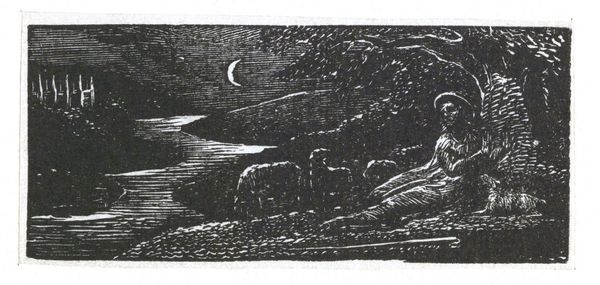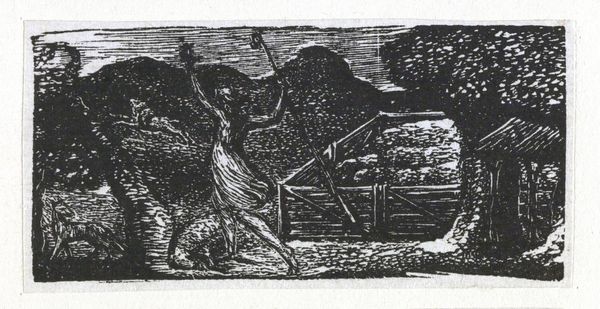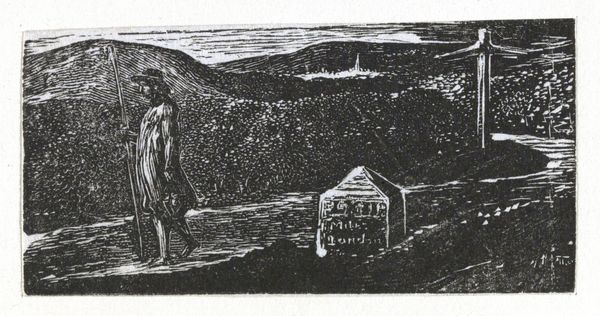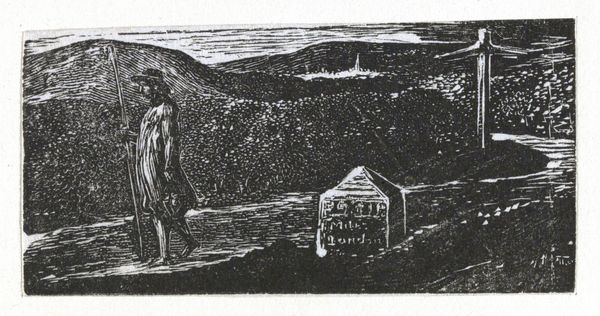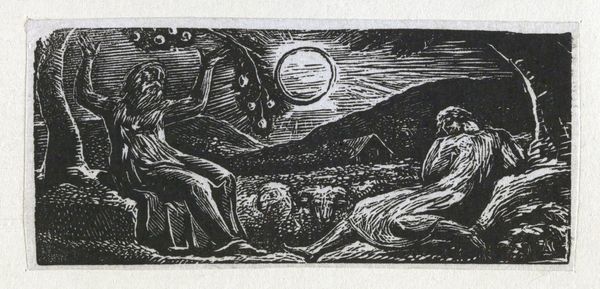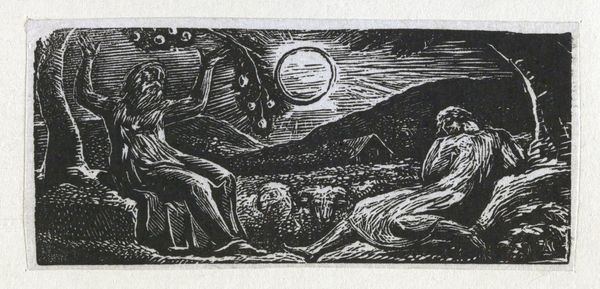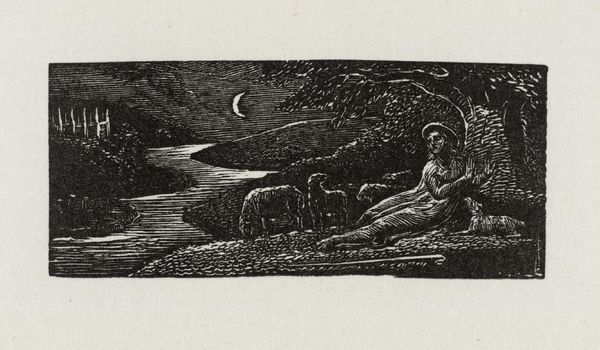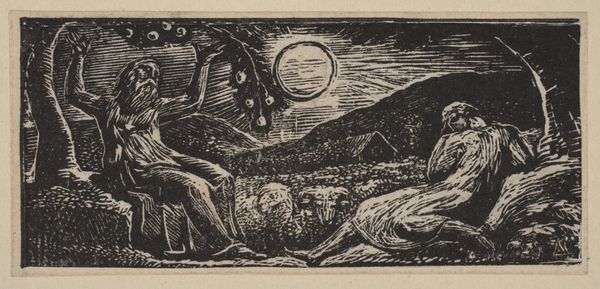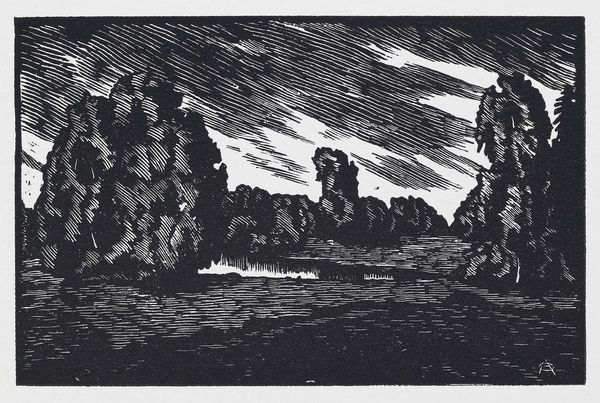
Dimensions: image: 33 x 75 mm
Copyright: CC-BY-NC-ND 4.0 DEED, Photo: Tate
Editor: William Blake’s wood engraving, *Colinet Rests by a Stream at Night*, gives me a feeling of solitude, but also of peace. What do you see in this piece, from a symbolic perspective? Curator: The crescent moon often signifies change, a transition. Juxtapose that with Colinet, the shepherd, at rest. What memories or ideas does the archetype of the shepherd evoke? Editor: Perhaps a connection to nature, innocence, pastoral life…even religious connotations? Curator: Precisely! Blake uses familiar symbols to tap into collective memories. The stream also suggests the passage of time, the flow of life. Notice the gate? It marks a boundary, a threshold. What might Colinet be contemplating? Editor: He could be at a crossroads, pondering the past or the future. It's amazing how Blake packs so much meaning into such a small image. Curator: Indeed. Visual symbols often carry a great emotional weight and cultural significance.
Comments
tate 6 months ago
⋮
http://www.tate.org.uk/art/artworks/blake-colinet-rests-by-a-stream-at-night-a00121
Join the conversation
Join millions of artists and users on Artera today and experience the ultimate creative platform.
tate 6 months ago
⋮
Samuel Palmer was the most important of Blake’s followers, known as the Ancients. Palmer first met Blake in 1824. He described these illustrations to an imitation of the First Eclogue by the Roman poet Virgil as ‘visions of little dells, and nooks, and corners of Paradise’. Palmer’s art was particularly influenced by them. These prints appealed to the Ancients because they were the result of Blake’s experiments with a new medium; he had never engraved on wood before. Even at the age of sixty-four he wanted to make further explorations in his art. Gallery label, August 2004
